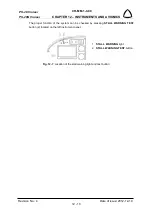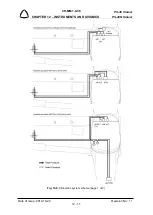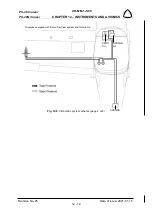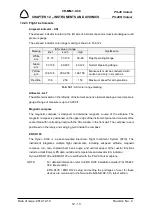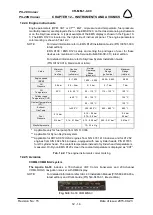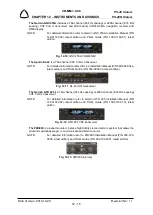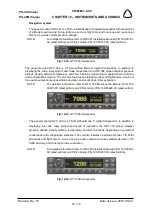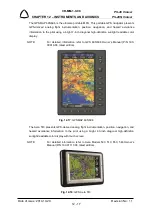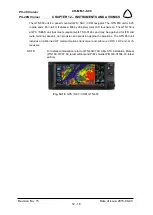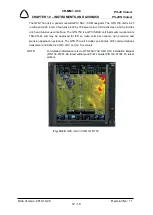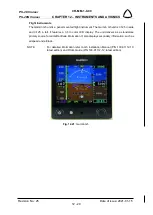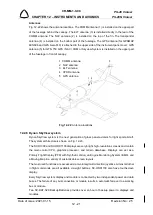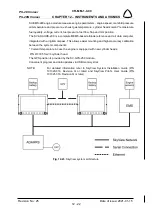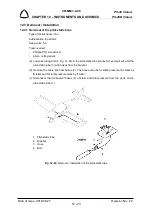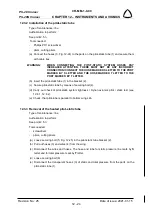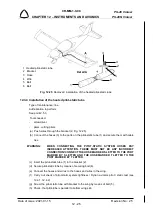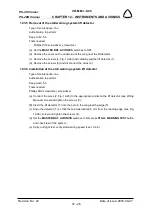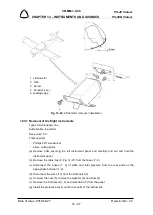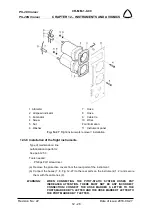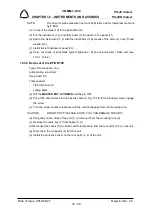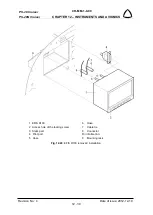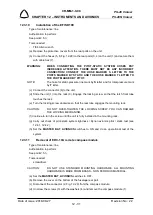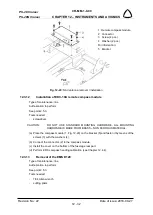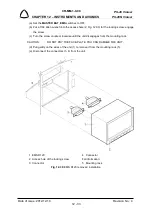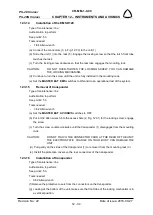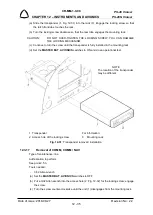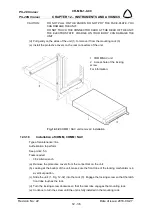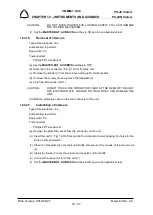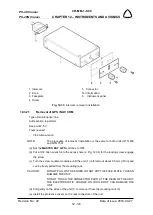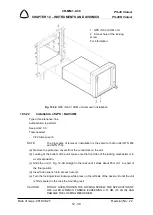
PS-28 Cruiser
PS-28N Cruiser
CR-MM-1-0-00
CHAPTER 12 – INSTRUMENTS AND AVIONICS
Revision No.: 25
Date of issue: 2021-01-15
12 - 24
12.3.2 Installation of the pitot-static tube
Type of maintenance: line
Authorization to perform:
See point 2.5.3.
Tools needed:
-
Phillips PH1 screwdriver
-
pliers, cutting pliers
(a) Connect the hoses (3, Fig. 12-24) to the ports on the pitot-static tube (1) and secure them
with cable ties.
WARNING:
WHEN CONNECTING THE PITOT-STATIC SYSTEM HOSES PAY
INCREASED ATTENTION. THERE MUST NOT BE ANY INCORRECT
CONNECTION! CONNECT THE HOSE MARKED S LETTER TO THE PORT
MARKED BY S LETTER AND THE HOSE MARKED T LETTER TO THE
PORT MARKED BY T LETTER.
(b) Insert the pitot-static tube (1) in the bracket (2).
(c) Secure pitot-static tube by means of securing bolt (4).
(d) Carry out check of pitot-static system tightness / Dynon avionics pitot / static test (see
12.4.1, 12.4.2).
(e) Check, that pitot-tube is parallel to bottom wing skin.
12.3.3 Removal of the heated pitot-static tube
Type of maintenance: line
Authorization to perform:
See point 2.5.3.
Tools needed:
-
screwdriver
-
pliers, cutting pliers
(a) Loose securing bolt (5, Fig. 12-25) in the pitot-static tube bracket (2).
(b) Pull out hoses (3) and wires (4) from the wing.
(c) Disconnect the wires and hoses. The hose and tube for static pressure line mark by
S
letter and for total pressure mark by
T
letter.
(d) Loose securing bolt (6).
(e) Disconnect the transparent hoses (3) of static and total pressure from the ports on the
pitot-static tube (1).

